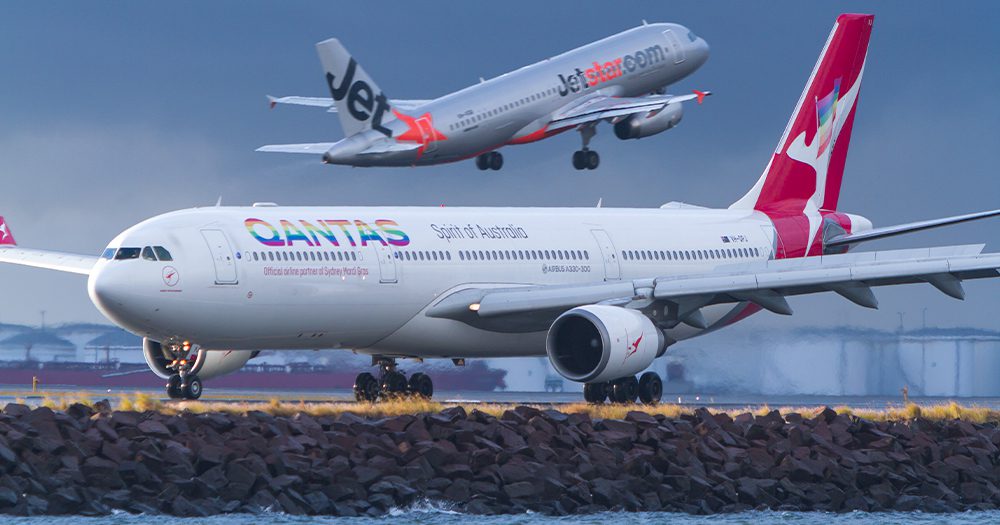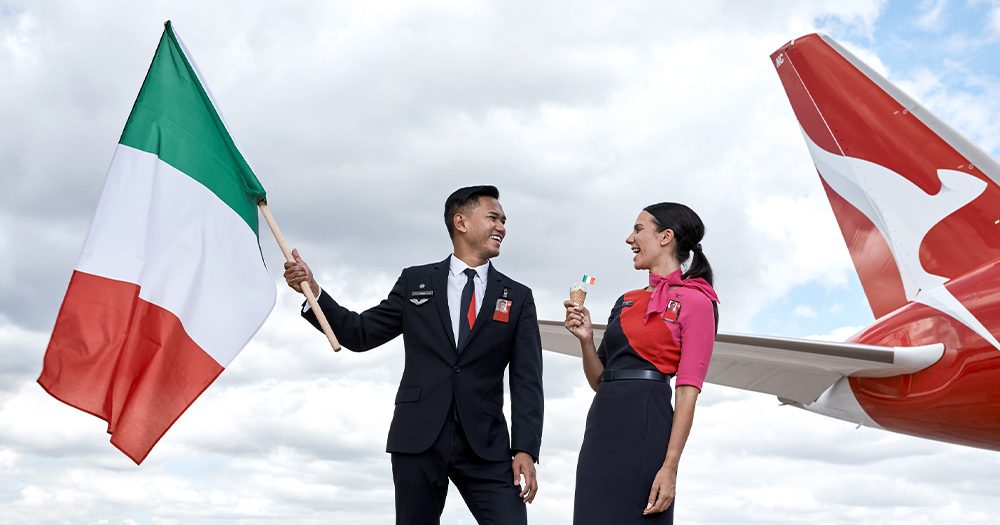Qantas has forecast a first-half loss of more than $1.1 billion but says it has made inroads in reducing debt and is looking ahead to 2022 and beyond.
The national carrier on Thursday blamed the estimated loss in underlying earnings on months of coronavirus lockdowns and travel restrictions from the Delta outbreak.
However, chief executive Alan Joyce said changes to the business made earlier in the pandemic helped the airline through the tough period.
While domestic and overseas flights have since resumed, the Omicron variant has affected some bookings.
“The news of the Omicron variant had a clear impact on people’s confidence to book international trips in particular, but we haven’t seen large numbers of cancellations,” Mr Joyce said.
“Many customers have strong intentions to travel if their border and quarantine settings are right, and in the past few days we have seen intakes improve.”
The carrier’s debt levels have been helped by the $802 million sale of Sydney land earlier this year. Continued strength from Qantas Freight and Qantas Loyalty has also made significant contributions to cash flow.
Qantas also announced today that it has chosen the Airbus A320neo and Airbus A220 families as the preferred aircraft for the long-term renewal of its domestic narrow-body fleet, which once finalised, will represent the largest aircraft order in Australian aviation history.

Across both Qantas and Jetstar, the Group says it is holding significant levels of domestic bookings over the Christmas and summer holiday period. Demand momentum slowed in late November due to uncertainty regarding the Omicron variant but there has been a recent improvement.
With almost all states and territories now open, the Group expects domestic flying to be about 75 per cent of pre-COVID levels by the end of December rising to more than 100 per cent in February 2022.
“We added new domestic routes based on changing demand patterns and we’re now doing the same internationally. Our new flights to India are some of the fastest-selling Qantas has ever had, with virtually all flights in December full.
“Domestic demand has started to pick up again and we’re expecting a strong performance over the Christmas period and continued strength into early next year as more restrictions ease,” added Mr Joyce.
Qantas also moved quickly to take advantage of the faster-than-expected opening of international borders into New South Wales and Victoria.
Routes to London, Los Angeles and Singapore restarted in November, enabling the Group to capture high levels of pent up demand.
“One of our biggest strengths throughout the pandemic has been the fact we’ve responded quickly to change. We’ve significantly reduced our cost base which improves our ability to recover. We were able to switch on an initial wave of international flights in time for the accelerated border opening in November, which meant we could capitalise on pent-up demand,” he said.

QF says bookings are extremely strong on new routes from Sydney and Melbourne to Delhi which started a fortnight ago, and initial bookings on the recently announced Perth-Rome seasonal service are encouraging.
There was, however, a significant drop in booking momentum for international flights due to news of the Omicron variant and the additional quarantine restrictions imposed, but current loads have held and booking activity has started to pick up.
Over the past month, the Group has adjusted the restart timing for some routes, including Japan, New Zealand, Hong Kong and Shanghai in response to extended border restrictions in those countries. The return of Sydney-San Francisco and Brisbane-San Francisco has been paused.
Due to these and other smaller adjustments, the airline says the ramp-up of Group international capacity has been slowed by about 10 per cent in the first half of 2022 and is now expected to be at the bottom end of the previously quoted 40-55 per cent range of pre-COVID levels.
“This has been one of the worst halves of the entire pandemic, where most states had their borders closed and the majority of Australians were in lockdown. Domestically, our capacity fell to around 30 per cent of pre-COVID levels for several months,” said Mr Joyce.
“Fortunately, the structural changes we made earlier in the pandemic put us in a good position to weather these extremely poor trading conditions while the national vaccination rate reached a point where states started to open back up.
“Australia now has one of the highest levels of vaccination and it’s still rising. That sets us apart from many other countries and puts us in a much better position to manage uncertainty around variants and seasonal surges,” said Mr Joyce.
Net debt for the Qantas Group was forecast to be $5.65 billion by the end of December.

